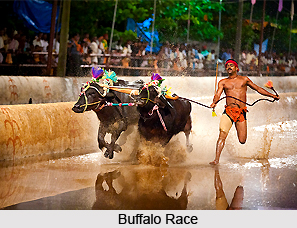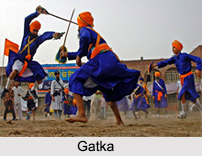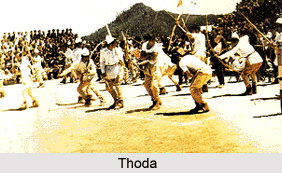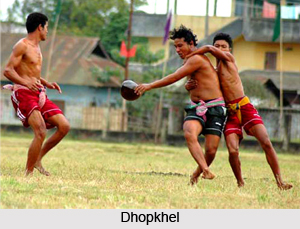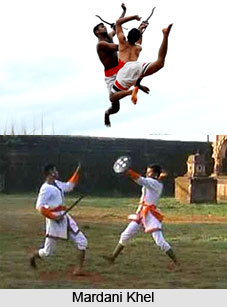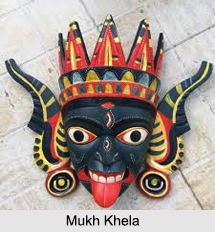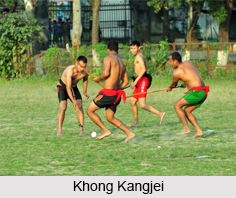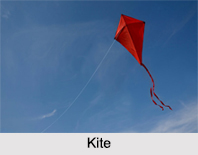 Kite flying is a famous game in India. Though, kite flying is popular in South Asian countries, in India the traditional game is promoted through kite festivals. Kite flying is concentrated in Indian States like Rajasthan, Gujarat and West Bengal.
Kite flying is a famous game in India. Though, kite flying is popular in South Asian countries, in India the traditional game is promoted through kite festivals. Kite flying is concentrated in Indian States like Rajasthan, Gujarat and West Bengal.
Flying of Kite
Flying a kite is great fun on a autumnal and spring days. It`s also very relaxing for one who likes play in the days of holiday. A kite is an aircraft consisting of wings tethered to an anchor system. Frequently a wing of a kite is referenced as "kite". The necessary lift that sustains the kite in flight is generated when air flows over and under the kite`s surface, producing low pressure above and high pressure below the wings. The interaction with the wind also generates horizontal drag along the direction of the wind. The resultant force vector from the lift and drag force components is opposed by the tension of one or more of the lines or tethers to which the kite is attached. The anchor point of the kite line may be static or moving. The same principles can be used in water and experiments have also been made with lighter-than-air kites (kytoons).
Sports with Kites
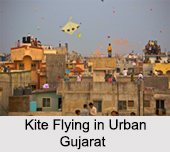 Kites may be flown for recreation, art or other practical uses. Sport kites can be flown in aerial ballet, sometimes as part of a competition. Power kites are multi-line steerable kites designed to generate large forces which can be used to power activities such as kite surfing, kite land boarding, kite fishing, kite bugging and a new trend snow kiting. Kites towed behind boats can lift passengers which has had useful military applications in the past.
Kites may be flown for recreation, art or other practical uses. Sport kites can be flown in aerial ballet, sometimes as part of a competition. Power kites are multi-line steerable kites designed to generate large forces which can be used to power activities such as kite surfing, kite land boarding, kite fishing, kite bugging and a new trend snow kiting. Kites towed behind boats can lift passengers which has had useful military applications in the past.
Origin of Kites
Kites were invented in China, where materials ideal for kite building were readily available: silk fabric for sail material; fine, high-tensile-strength silk for flying line; and resilient bamboo for a strong, lightweight framework. The kite has been claimed as the invention of the 5th-century BCE Chinese philosophers Mozi (also Mo Di) and Lu Ban (also Gongshu Ban). By 549 ADpaper kites were certainly being flown, as it was recorded that in that year a paper kite was used as a message for a rescue mission. Ancient and medieval Chinese sources describe kites being used for measuring distances, testing the wind, lifting men, signaling, and communication for military operations. The earliest known Chinese kites were flat (not bowed) and often rectangular. Later, tailless kites incorporated a stabilizing bowline. Kites were decorated with mythological motifs and legendary figures; some were fitted with strings and whistles to make musical sounds while flying.
Introduction of Kite in India
After its introduction into India, the kite further evolved into the fighter kite, known as the "patang" in India, where thousands are flown every year on festivals such as Makar Sankranti.
Kite Festivals of India
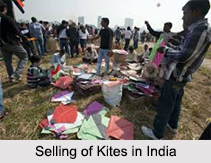 Kite festivals of India, also known as International Kite Festivals are significant festive events which celebrate one of the most traditional entertainment activities of the country the flying of kites. During `Makar Sankranti` or `Uttarayan`, International Kite Festival of Gujarat is celebrated with pomp. Brightly coloured kites of various shapes and sizes crowd the sky, particularly metal, plastic, wood, nylon and other forms of kites. Lighted kites, illumined with lights or candles are sent flying across the night sky of Gujarat, which are locally named `tukkals`. The participants of Kite festival are from China, Malaysia, Australia, UK, Japan, France, USA, Indonesia and Italy assemble at this famous kite festival, to display their kite flying skills. `Desert Kite Festival` and is organised in Jaipur since the last five years during Uttarayan. Visitors would observe enormous kites being flown across the vast sky, some measuring about 1.5 kms in length. In the states like West Bengal, Rajasthan, Delhi and Bihar kite festivals are celebrated with pomp and grandeur.
Kite festivals of India, also known as International Kite Festivals are significant festive events which celebrate one of the most traditional entertainment activities of the country the flying of kites. During `Makar Sankranti` or `Uttarayan`, International Kite Festival of Gujarat is celebrated with pomp. Brightly coloured kites of various shapes and sizes crowd the sky, particularly metal, plastic, wood, nylon and other forms of kites. Lighted kites, illumined with lights or candles are sent flying across the night sky of Gujarat, which are locally named `tukkals`. The participants of Kite festival are from China, Malaysia, Australia, UK, Japan, France, USA, Indonesia and Italy assemble at this famous kite festival, to display their kite flying skills. `Desert Kite Festival` and is organised in Jaipur since the last five years during Uttarayan. Visitors would observe enormous kites being flown across the vast sky, some measuring about 1.5 kms in length. In the states like West Bengal, Rajasthan, Delhi and Bihar kite festivals are celebrated with pomp and grandeur.
International Kite Festival
International Kite Festival in Gujarat is a colourful festival which is celebrated during `Makar Sankranti` and is also known as `Uttarayan`. According to the Hinduastronomy the sun enters the zodiac of `Makara` (Capricorn). Hence, it is called Uttarayan or Makar Sankranti. It is the time when the sun travels northwards marking the decline of winter. The days become longer and a feeling of anticipation, joy and jubilation grips all who celebrate the occasion of thanksgiving and merry-making. International Kite Festival signifies Gujarat`s cultural strength where people meet with each other and engage in celebration. All over the state, in the month of January, the serene blue sky looks splendid with colourful kites.
Designs of Kite in India
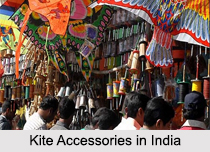 Designs of the kites often emulate flying insects, birds, and other beasts, both real and mythical. The finest Chinese kites are made from split bamboo (usually golden bamboo), covered with silk, and hand painted. On larger kites, clever hinges and latches allow the kite to be disassembled and compactly folded for storage or transport. Cheaper mass-produced kites are often made from printed polyester rather than silk. Tails are used for some single-line kite designs to keep the kite`s nose pointing into the wind. Spinners and spin-socks can be attached to the flying line for visual effect. There are rotating wind socks which spin like a turbine. On large display kites these tails, spinners and spin-socks can be 50 feet (15 m) long or more. Modern aerobatic kites use two or four lines to allow fine control of the kite`s angle to the wind. Traction kites may have an additional line to de-power the kite and quick-release mechanisms to disengage flyer and kite in an emergency.
Designs of the kites often emulate flying insects, birds, and other beasts, both real and mythical. The finest Chinese kites are made from split bamboo (usually golden bamboo), covered with silk, and hand painted. On larger kites, clever hinges and latches allow the kite to be disassembled and compactly folded for storage or transport. Cheaper mass-produced kites are often made from printed polyester rather than silk. Tails are used for some single-line kite designs to keep the kite`s nose pointing into the wind. Spinners and spin-socks can be attached to the flying line for visual effect. There are rotating wind socks which spin like a turbine. On large display kites these tails, spinners and spin-socks can be 50 feet (15 m) long or more. Modern aerobatic kites use two or four lines to allow fine control of the kite`s angle to the wind. Traction kites may have an additional line to de-power the kite and quick-release mechanisms to disengage flyer and kite in an emergency.
Designs often emulate flying insects, birds, and other beasts, both real and mythical. The finest Chinese kites are made from split bamboo (usually golden bamboo), covered with silk, and hand painted. On larger kites, clever hinges and latches allow the kite to be disassembled and compactly folded for storage or transport. Cheaper mass-produced kites are often made from printed polyester rather than silk. Tails are used for some single-line kite designs to keep the kite`s nose pointing into the wind. Spinners and spin-socks can be attached to the flying line for visual effect. There are rotating wind socks which spin like a turbine. On large display kites these tails, spinners and spin-socks can be 50 feet (15 m) long or more.
Modern Aerobatic Kites in India
Modern aerobatic kites use two or four lines to allow fine control of the kite`s angle to the wind. Traction kites may have an additional line to de-power the kite and quick-release mechanisms to disengage flyer and kite in an emergency.
